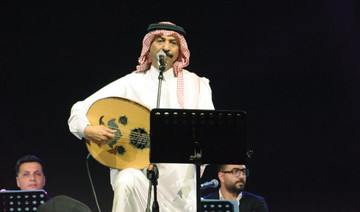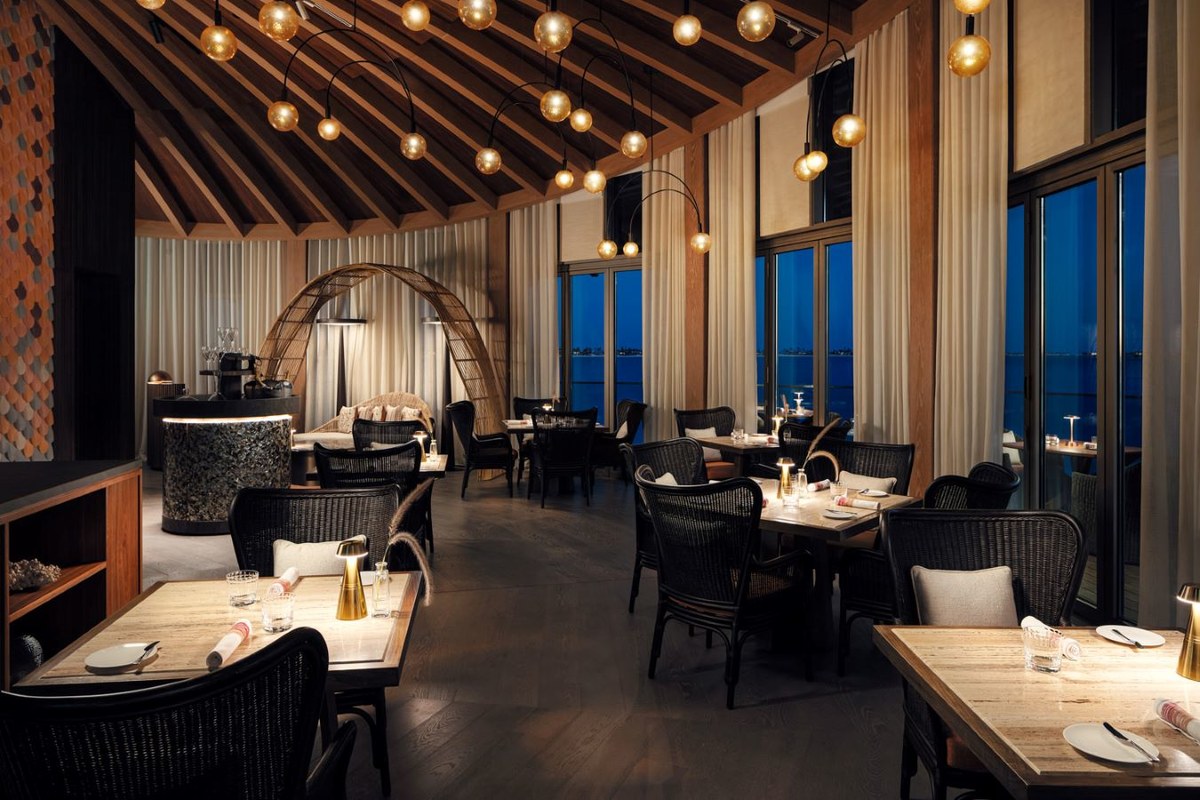DUBAI: Moroccan singer-songwriter Manal was one of several regional alternative music stars on the bill of DXBeats at Dubai Opera House on Saturday night, in front of an enthusiastic — although not full — house.
UAE-based Syrian MC and singer Moh Flow kicked off the evening with his Drake-esque take on hip-hop. With his brother, producer Ayham Homsi, better known as AY, providing the often sparse instrumentation and beats, Moh Flow quickly got the crowd moving. It’s never easy being the opening act on a multi-artist lineup —especially when the show starts at 6.30 p.m. — but the pair put on a great start to the eclectic night.
Next up was Manal. Speaking to Arab News backstage after her set, the Moroccan artist said she’d been nervous beforehand.
“I was so stressed out, because people here don’t really know who I am,” she said. She needn’t have worried. From the mellow, acoustic start to her set, Manal had the audience hooked. She took the crowd through her days posting covers online before being discovered and taking her career to another level with her pop- and R&B-infused sound. The set built into a rowdier, emotion-fuelled performance culminating in what the singer described as her favorite track, “Taj.”
“It’s a feminist song,” she explained to Arab News. “It was my first attempt at rapping. I’m a singer-songwriter. I’d never rapped before. For this particular subject, I really wanted something strong. There are different aspects to the song, like sexual harassment, the difference between genders, my personal experience with the music industry, so yeah, for me it’s a very good song. I really like it.”
People in Morocco were “shocked” when they first heard Manal rap.
“They’re not used to these sounds in Morocco and the Arab world — especially for a girl,” she said. “But I’m going to try and do something different every time. Maybe I’ll do rap, maybe I’ll do trap, rock, pop. If I feel like singing a ballad, I’m just going to sing a ballad. But if I’m really angry about something, maybe I’m going to do rap or trap. It really depends on my mood.”
Following Manal at Dubai Opera House were Lebanese rock & roll band The Wanton Bishops. Frontman Nader Mansour wasted no time in trying to raise the energy levels in the auditorium. “Are you alive?” he asked. “Then act like it…”
The band’s blues-inspired take on rock has begun to incorporate some Oriental flourishes over the past year or so, and that has turned them from a very good but entirely Western-sounding act into something far more original. But they’ve lost none of the charismatic energy and stage presence that has helped them build an international audience. Once the engineers in a venue used to more staid music got the hang of a rockier sound, the Bishops showed how their many months on the road have honed their show, banging out a thrilling set.
The night then shifted gears again, as Iraqi-Canadian MC Narcy took the stage. The 35-year-old has plenty of onstage experience, and it showed here as he engaged the crowd’s mind and feet with his socially conscious old-school hip-hop.
Narcy was followed by acclaimed Lebanese singer Yasmine Hamdan, whose sensual, hypnotic set was greeted by the night’s loudest reception from the audience. With much of her music built around feedback-heavy guitar drones and electronic noise, Hamdan put on an atmospheric, theatrical performance that felt perfectly suited to the venue.
Egyptian ‘project’ Sharmoofers finished off the evening with a riotous reggae-and-funk-inspired set that backed up their belief that “music is the way to happiness.” The five-piece band brought infectious energy and humor to the stage, and left everyone with a smile on their face.
The regional alternative music scene’s first venture into mainstream territory in the UAE can go down as a qualified success, then. While the turnout was a little disappointing, with the venue half-full at most, the people who were there got to enjoy an event that showcased just how good some of the Arab world’s underground artists are in the kind of setting their talent deserves.
“I really think it’s important to support Arab artists and support different genres of music,” Manal said backstage. “So I really hope Dubai — and the Arab world — will be interested in doing more of these kind of shows.”























